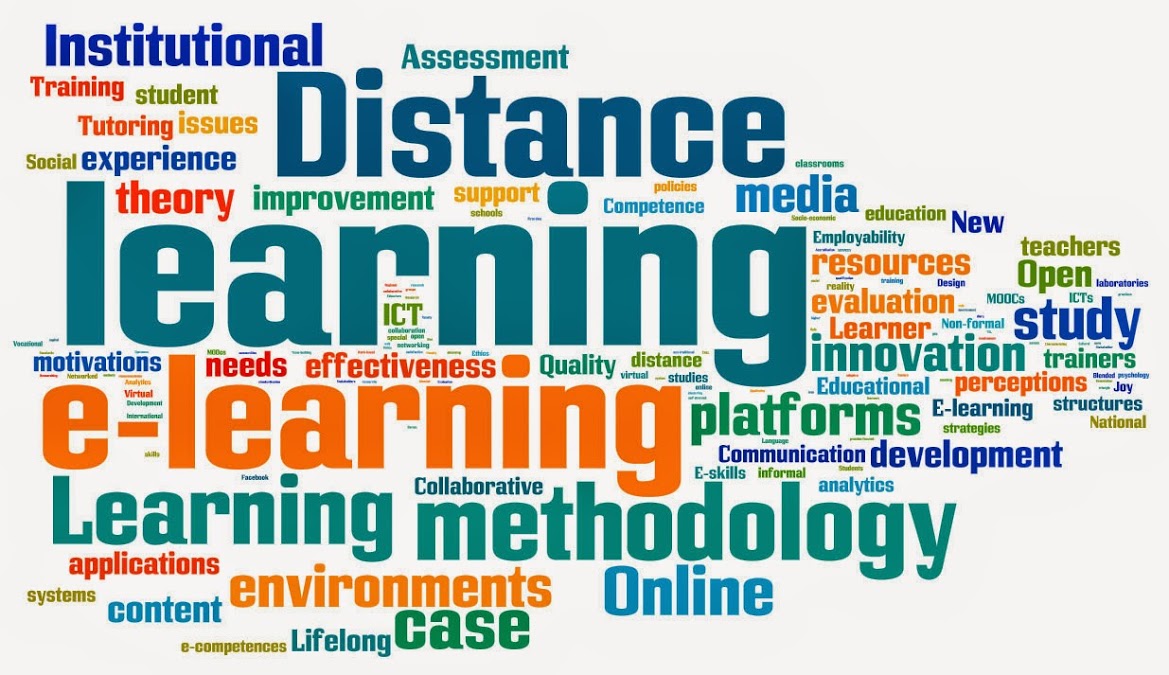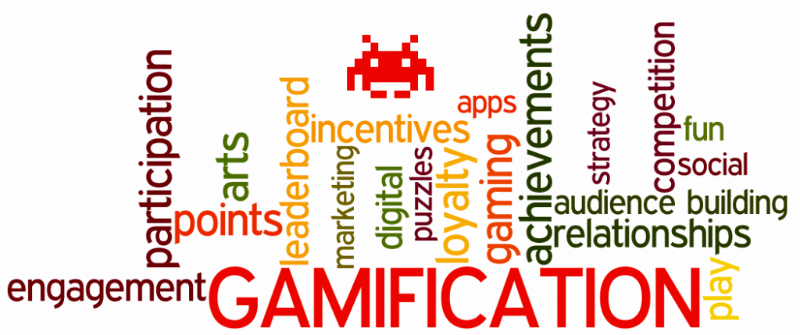*You’re invited to explore my new website—a digital space brimming with diverse articles and engaging posts on subjects spanning science, education, technology, research, medicine, societal dynamics, history, and spiritual insights. Embark on a journey of discovery as you navigate thought-provoking content designed to ignite curiosity and inspire. Feel free to share your thoughts, dive into discussions, and explore with friends. Join me in this exciting journey of knowledge and growth.*
Visit the website at https://64d36f515b783.site123.me/
Higher education and the digital world
The main aim of this page is to advocate a new vision for the Lebanese University to rise again as an outstanding academic institution providing high standards of teaching and training in the inescapably challenging digital world. However, such a vision would serve any university that might be in deer need to implement new educational strategies to take advantage of the great potential of electronic courses and online learning. For this I decided to perform research work on the online learning strategies that have been implemented by outstanding international universities and draw on their experience to deliver online learning services to our students. Equally important is the development of competences to design online or e-courses and the embedded assessment or evaluation tools.

Empowered by the internet, the education models have become flexible, creative, challenging, and complex. The new millennium was marked by a dramatic technological revolution! As a result, the world of today is rapidly changing with new problems as well as new possibilities and opportunities. We now live in an increasingly diverse, globalized, and complex, media-saturated society. A clear transition has been observed from a teacher-centered to student-centered education. In the modern and innovative classroom education methods shifted to what students expect, know, can do, and are. Learning is designed on the upper levels of Blooms’ taxonomy i.e. synthesis, analysis and evaluation, to be research-driven and active. Other features comprise: integrated and interdisciplinary curriculum connected to students’ interests, learning at high levels, instruction addresses student diversity and aligned to living and working in a globalized society, etc… We believe that any successful academic program should be organized around five main pillars: emotional intelligence, inquiry, critical thinking and problem solving, awareness of the diversity of human experience, academic communication competences and confidence, and ethical aspects and social responsibility.
Students or learners are invited to collaborate with classmates and others around the world, an approach that enhances their skill development and learning. In this context, e-tools (e.g. as e-portfolios) are used from the beginning of the academic program to both enhance student learning and serve as an instrument of program evaluation and visibility. At the Lebanese University we are geared to offer the best teaching and training programs to students to become multi-skilled, committed, highly qualified, cross-cultured, innovative, creative and entrepreneurial. Striving to cultivate a culture of performance and develop new strategies that enable our students to gain skills, competences, and academic maturity, must be an academic cornerstone. Competences for lifelong learning (LLL) process must be integrated in any ambitious, flexible and evolving academic program. Competencies, here, refer to personal characteristics e.g. knowledge, attitudes and skills that contribute to individual’s ability to attain superior performance.
In a world getting more and more digital, the learning systems have been widely disrupted. New education/learning products have been made available to everyone through electronic and other forms of learning. Such leap in education systems can be qualified as a paradigm shift. To this end, e-courses are being designed and developed by many international universities to meet the soaring needs of future students in a demanding and competitive world. As we encourage interactions among faculty and students across areas of expertise, it is evident that such innovation (e-courses) will certainly make an impact that will drive discovery and creativity. Furthermore, it is highly recommended to implement an observatory that helps understand what makes some scientific fields work, and what makes them fail. It is also about creating effective environments to foster learning and development in every subject and domain of performance.
Using “Paradigm Shift” to qualify education disruption
Could we use the term “Paradigm Shift” to describe the deep transformation in learning models around the world?!
Assess online learning in terms of strategies, challenges and opportunities
All strategies and strategic plans emerge from the same building blocks. These strategies have in common an overarching objective: offer a quality online learning experience, advocate excellence in teaching and learning and help develop the appropriate competences in all available online environments. To achieve such objectives academic institutions seek to guarantee a number of factors:
- Find out the learning needs of different student populations and manage to obtain the student engagement by creating relevant and rigorous learning environment.
- Implement innovative learning practices to support student learning and favor program completion and student success.
- Quality learning is contingent of the continuous efforts to improve all aspects of e-learning. This requires the collaboration of all actors: online programs developers, teachers/supervisors, advisors and professional staff, and students.
- Train the trainers according the best quality standards for online learning.
- Develop and implement new programs and courses to meet the needs of a demanding labor market for highly qualified professionals.
A number of reports published in the last years have shown a soaring industry with an increasing number of learners, academic institutions and corporations recognizing the effectiveness of online learning. Furthermore, all concerned parties turning to e-learning are advocating its convenience.

It is obvious the future of the e-learning industry is most likely to be paved with exponential growth and immense potential for profit. Now, more than ever, learners and companies are turning to e-learning courses and online training events to achieve their personal and professional goals.
Different types of e-learning
In general, three levels of e-learning are reported depending on the contexts and the requirements. The context may range from normal basic course to the most advanced level of an interactive course where materials are represented in a variety of ways. E-courses fall within three categories:
- Text Driven. A very simple level that includes text, graphics, some audio, and simple test questions.
- Interactive course. An interactive e-learning course is very similar to a text driven one, with the exception that there has been more consideration placed on interactive components to enhance the learning.
- Simulation course. Simulation e-learning is highly interactive and relies heavily upon graphics, video, audio and some level of gamification.
Hone your skills and become a learner…
Among the skills you have to hone after graduation, when you embark on a career, as part of Life Long Learning (LLL) process, we cite: critical thinking and problem solving, collaboration across networks, and accessing and analyzing information. For instance, students should be trained as soon as possible (even before university) to create electronic-portfolio instead of the classical resume; e-portfolio serves as a means for learning and as a tool for assessment and evaluation. E-portfolios should encompass all sorts of activities, academic and non-academic, as digitized documents and videos. Thanks to their e-portfolios students/graduates become visible to potential employers searching for talented graduates. Only then, they would realize how powerful the digital world has become. Not trying to be sarcastic, students/graduates do use and navigate on social networks, but it is essentially for entertainment purposes not for work! For this, students/graduates are invited to seize the web 2.0 tools to share, communicate and collaborate, and help find solutions to all sorts of problems.
E-Learning, online learning, and distance learning environments
With a soaring number of online learners some terms have been used interchangeably. We need to agree on the definition of the new terms.
Distance learning. Distance education is the most renowned descriptor used when referencing distance learning. It often describes the effort of providing access to learning for those who are geographically distant.
E-learning. It is defined as strictly being accessible using technological tools that are web-based, web-distributed, or web-capable. It is believed that some level of interactivity needs to be included to make the definition truly applicable in describing the learning experience. All forms of e-learning, whether they are applications, programs, objects, websites, etc., can eventually provide a learning opportunity for individuals.
Online learning. It is a more recent version of distance learning which improves access to educational opportunities for learners described as non-traditional.
Digital game-based learning (DGBL)
Gamification is the use of game-based mechanics, aesthetics and game thinking to engage people, motivate action, promote learning and solve problems. Basically it’s the use of gaming technology to solve problems outside of the games sector. It was found that employees trained on video games learned more factual information, attained a higher skill level and retained information longer than workers who learned in less interactive environments.

Learning can be made challenging, motivational and rewarding through digital game-based approach. Actively participate in the learning process is what most students seek and need. They believe that such an approach provides an effective and interactive experience that helps them to grasp the essentials of learning and motivate them to grow their knowledge and expand their skills. In a game-based learning environment the students will have the opportunities to engage in a risk-free, challenging and progressive experience where failures do not convert into obstacles. Many reasons give grounds for the use of this approach.
- An engaging experience. As an educational tool, DGBL can improve learning performance.
- Competition. In a game learning environment there is no need for the learners to be against each other, players can attempt to challenge themselves and reach higher scores
- Rewarding. Learn about the strategies to overcome an obstacle. Goals and their corresponding rewards can be built in stages and set according to difficulty.
- Reinforcement. Feedback in a game context is instantaneous and scoring can be standardized to allow comparisons.
Despite this bright picture the effectiveness of DGBL is still controversial. Learning in isolation is one of the negatives associated with gaming technology. Well designed studies need to be performed to assess the lasting power of DGBL in the field of education.
Online learning potential
Research from industry generally suggests that information and computer technologies can play an important role in improving productivity. Online learning is often suggested as a means for improving educational outcomes. Some studies have shown that universities that use online learning enjoy significant savings and can increase student rates of learning. To improve the productivity of online learning some guidelines should be observed.
- Make resources accessible. Broadening the student access to lectures and courses of quality that academic institutions may not provide or because of the costs associated with recruiting teachers with the necessary skills and credentials.
- Embrace an active learning approach. Simulations and visualizations that make challenging abstract concepts more accessible to students represent one demonstrated advantage of computer-based resources. Some game-based programs foster learning through multiple perspectives and transfer through immersive experiences and activities.
- Answer learning needs, make it modular and flexible. Online learning environments are often described as highly individualized and differentiated. Modularization of online course content and persistent access to learning materials allow students to progress toward different goals or at different paces. In immersion methods, graphics are linked to sound and video and text elements create an appropriate environment of leaning language.
- Feedback for higher performance. Online learning environments can also offer multiple mechanisms to provide rich feedback and communication about student performance.
- Personalizing learning. The shift in educations systems towards more personalized learning has been stimulated by students’ specific interests. Personalized learning allows students to draw on their personal interests to direct learning objectives and content.
- Maximizing teacher and student time. Visualizations of learning progressions and student development made possible through learning management systems and other online data systems may offer an opportunity to make the educator’s workload lighter by providing targeted input to lesson planning and attempting to address individual student needs.
The potential of online learning
Make education relevant and rekindle students’ passion
We believe that the learning material and approaches must connect to the students’ goals, interests, and concerns. A number of directions serve as groundwork to build a new vision for education and passionate learning.
Focus on the course value. Show the specific value and articulate the learning goals for a particular course. Show relevance to students’ curriculum. Let them reach a better appreciation of the combined value of the courses within a broader academic framework.
Focus on the skills. Students need to learn and apply the tools and skills in a project-based approach or service-learning project to attempt to solve real problems connected to real life and real world.
Enthusiasm is contagious. Show your own passion and enthusiasm to attract students and stimulate their curiosity. Help them discover the value of the course they might have initially overlooked.
Focus on job opportunities. Does the course lead to a good job? Students care more about their future career and job prospects. The relationship between education and the economy is clear in their minds.
Focus on the evaluation systems. Heavy evaluation systems are likely to hinder students from cultivating a passion for a subject. Break the template and let the students think for themselves and deviate from the classical norms.
Show them that someone cares…
Rekindle students interest and motivation

Applications of online learning
Many lines of evidence sustain the fact that online learning might offer productivity benefits compared with traditional place-based schooling. Literature review suggests twelve applications of online learning that are seen as possible pathways to improved productivity:
- Broadening access in ways that dramatically reduce the cost of providing access to quality educational resources and experiences;
- Engaging students in active learning with instructional materials and access to a wealth of resources;
- Individualizing and differentiating instruction based on student performance, diagnostic assessments and preferred pace of learning;
- Personalizing learning by building on student interests;
- Using of game-based mechanics, aesthetics and game thinking to engage people, motivate action, promote learning and solve problems.
- Allowing students to collaborate with classmates and others around the world.
- Increasing interactivity among faculty and students across areas of expertise.
- Making better use of teacher and student time.
- Increasing the rate of student learning by increasing motivation and helping students grasp concepts and demonstrate competency more efficiently;
- Reducing school-based facilities costs;
- Reducing salary costs by transferring some educational activities to computers, and
- Realizing opportunities for economies of scale through reuse of materials and their large-scale distribution.
Applications of online learning
Site page is still under construction…

Every student has access to digital learning today through their smart phone. If the universities won’t change, then it is up to the instructors to become creative in how to best utilize the free digital resources available. Here are some free virtual labs on Population Growth of Protists http://glencoe.mheducation.com/sites/dl/free/0078757134/383928/BL_04.html Transpiration in Plants
http://glencoe.mheducation.com/sites/dl/free/0078802849/383946/BL_10.html
and a Virtual Pig Dissection
https://www.whitman.edu/academics/departments-and-programs/biology/virtual-pig
As well as building a digital human:
www,biodigital.com
I have created worksheets for my high school students to record and analyze data using these same labs. I will share them if you want. When instructors begin to change their methods of teaching one by one, then the whole university will be changed. It is the effect of lighting a candle to enlighten those in the immediate surroundings.
LikeLike
“The day we stop learning is the day we die”Michael Scott.
I was a student in LU university and I have been biology teacher for six years. We as humans always thrive to learn and develop and personally I am always thinking how can I learn more? How can I evolve in education? How can I keep my work and evolve im the same time without being destroyed by routines and stress? A few days ago, we were discussing this topic and the solution was ONLINE learning … I guess it is a great oppurtunity for me and all other students to make learning facilitated and available for us. ONLINE learning would definitely take the education to higher level and invrease the percentage of learners, educated and productive individuals in our society.
I wish this could come true.
LikeLike
Amani, if you would like, share your email with me and I will attach the worksheets I mentioned for the above virtual labs. That way you will have some online labs to begin using.
LikeLike